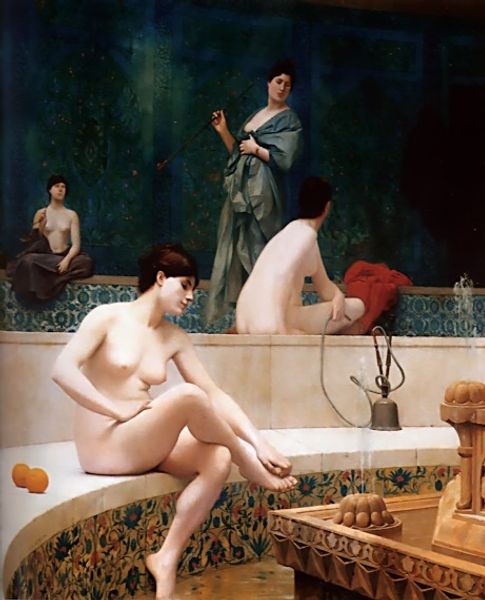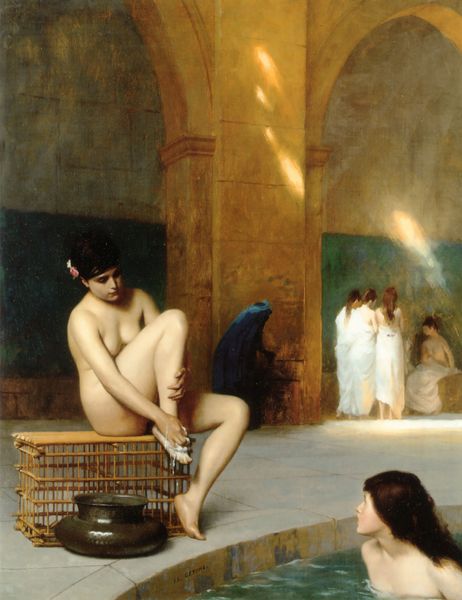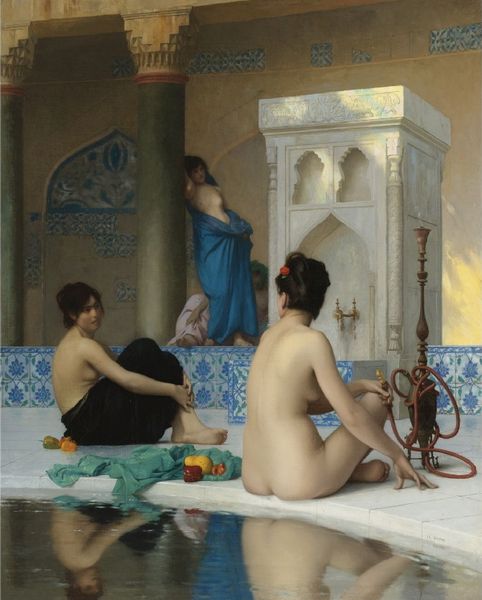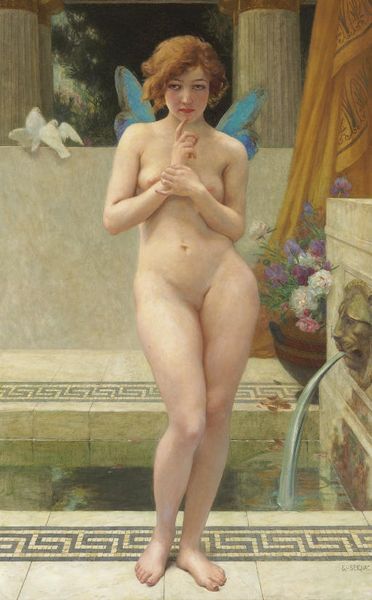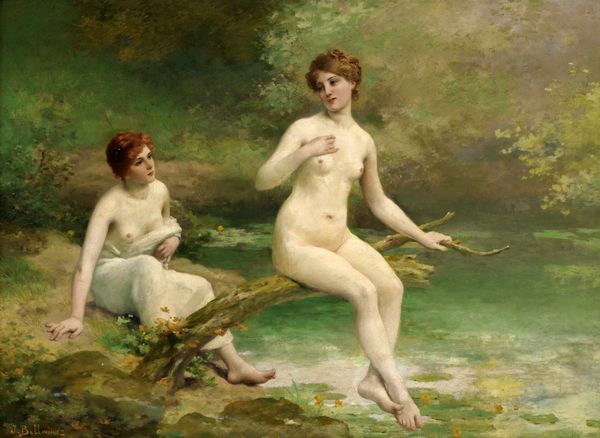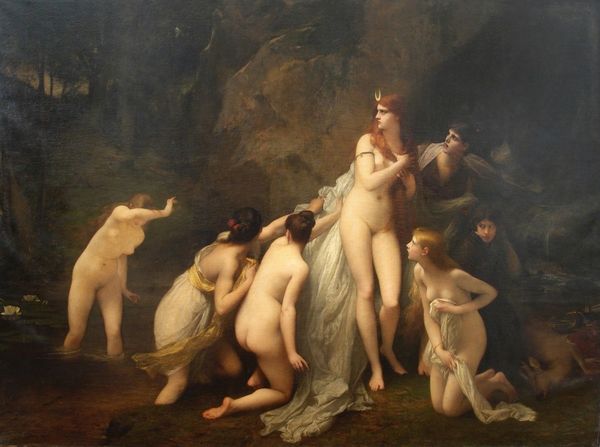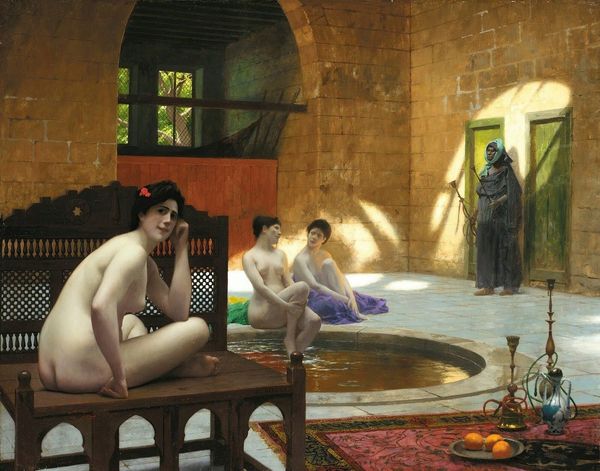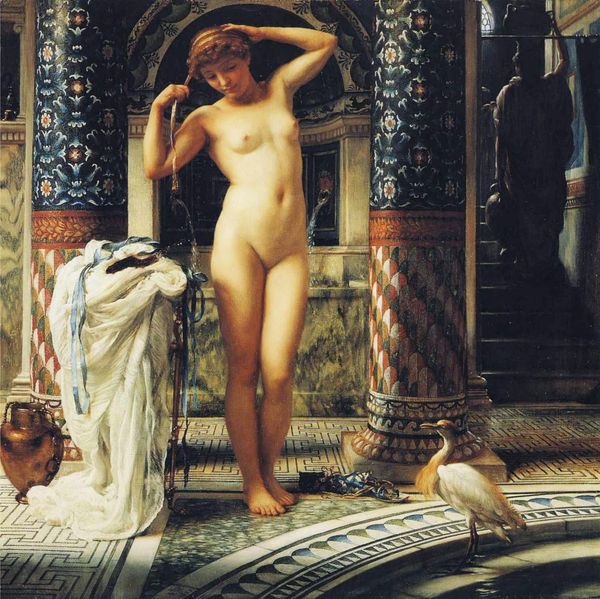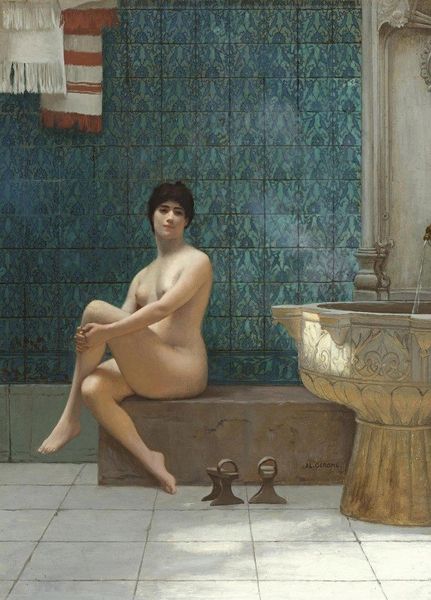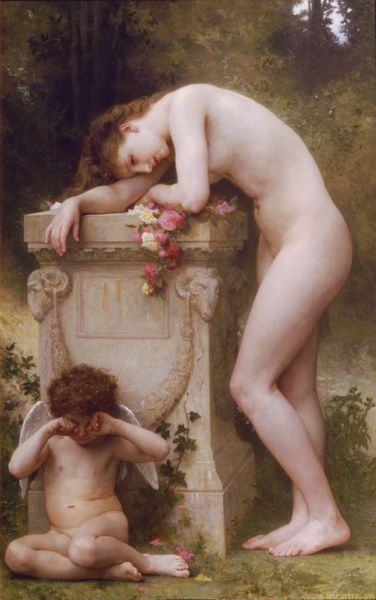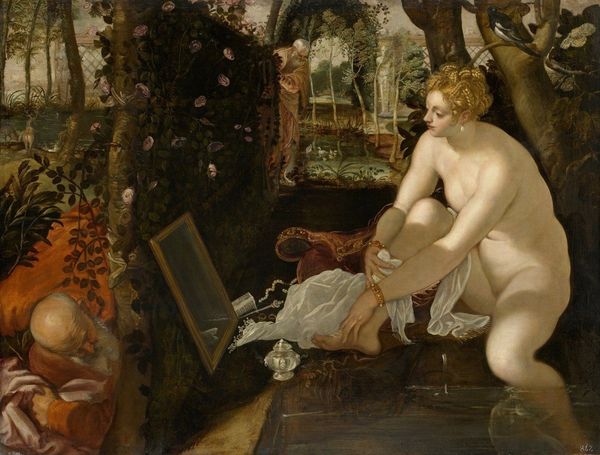
painting, oil-paint
#
gouache
#
painting
#
oil-paint
#
figuration
#
orientalism
#
mythology
#
genre-painting
#
history-painting
#
academic-art
#
nude
#
erotic-art
Dimensions: 62 x 46 cm
Copyright: Public domain
Curator: Jean-Léon Gérôme's "The Bathers," completed in 1889. It offers a fascinating glimpse into the artistic interpretations of Orientalism prevalent during that era. Editor: My initial reaction is the muted palette, all earth tones. It feels…stifling, almost, despite the apparent nudity. Curator: Right, it is oil paint. Gérôme's handling of the medium is so controlled; it nearly erases evidence of his labor. It evokes that sense of detachment, like an anthropologist coolly observing a culture he exoticizes. And note that the private collection this work resides in does not necessarily make its journey public or alter the image itself. Editor: I see what you mean. The figures almost blend into the architecture; they're not presented as individuals, but as types. And the composition, placing us as the observer, looking into a world deemed “other.” It enforces this division. Curator: Absolutely. This work participates in a history of orientalist paintings depicting bathhouses as spaces of leisure and sensuality, seen through the lens of European power. Note the tilework; consider how materials like that were being imported. Editor: There is a whole historical narrative embedded within that seemingly simple scene. It invites reflection on not just the artist's intention, but the broader political climate and the consumption of orientalist fantasies by Western audiences. And let’s not forget about access; who gets to see this image and where? It becomes a question of representation and power dynamics. Curator: Exactly. Thinking about this work, considering its construction—the materials, the processes, and its position within structures of social control and consumption. That is a way to challenge the idealized view of 'artistic genius' to acknowledge that everything created is collaborative and socially conditioned. Editor: This reminds us how essential it is to interrogate the role of the art world itself, the very institutions and forces that brought this image to our attention. It serves as an object of art, certainly, but more crucially, a lens through which to observe our history and biases. Curator: Indeed, understanding what went into making something brings us closer to an honest vision, wouldn’t you agree? Editor: Precisely. Examining “The Bathers” unveils more than a historical tableau, highlighting the very act of looking and the power dynamics inherent in how we portray "others."
Comments
No comments
Be the first to comment and join the conversation on the ultimate creative platform.
